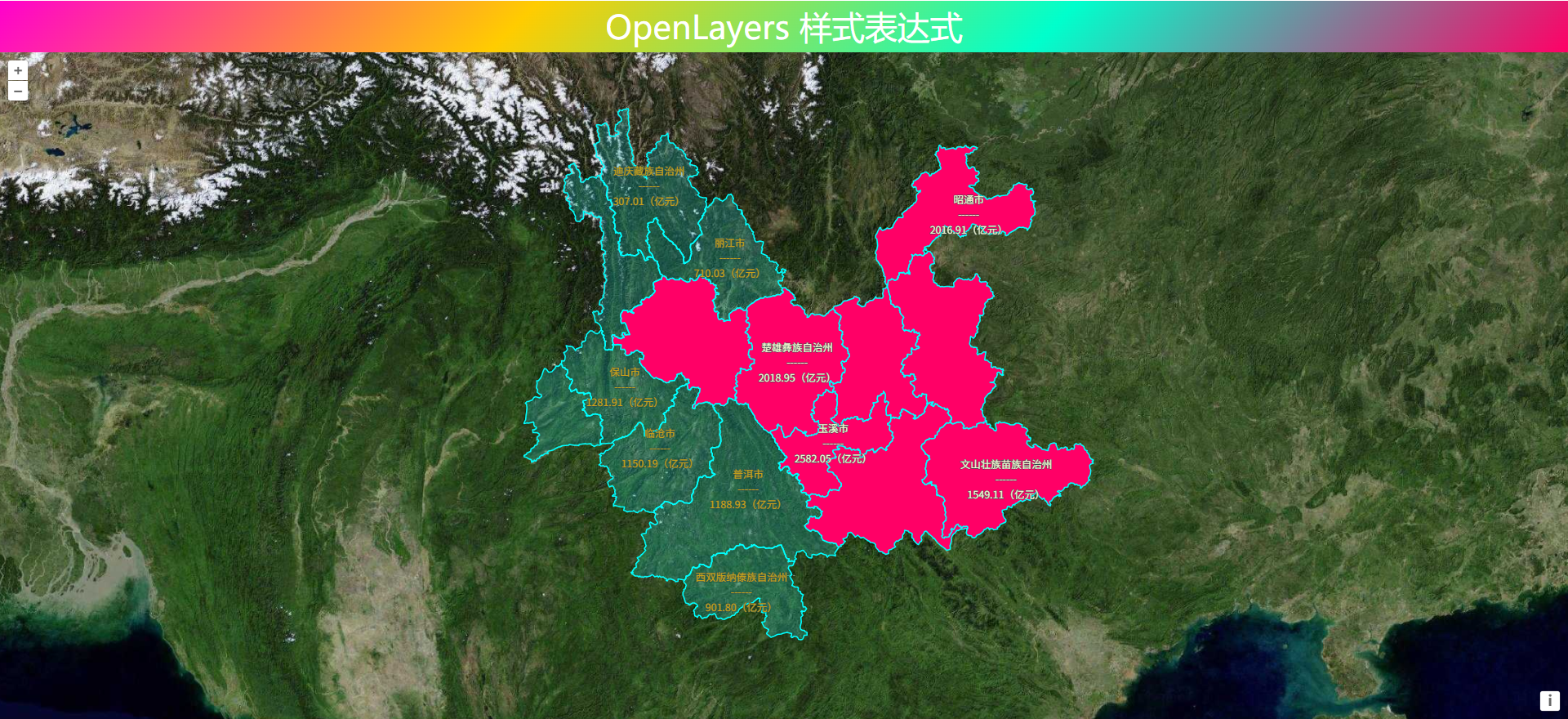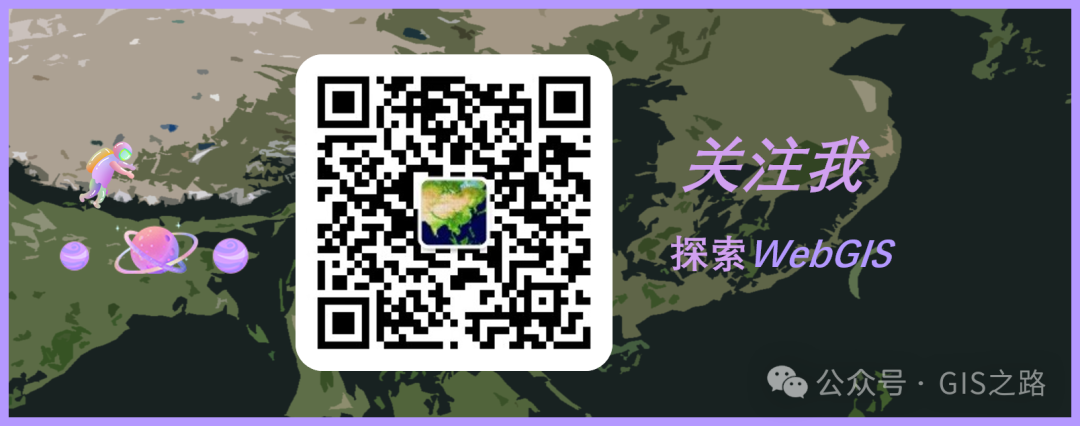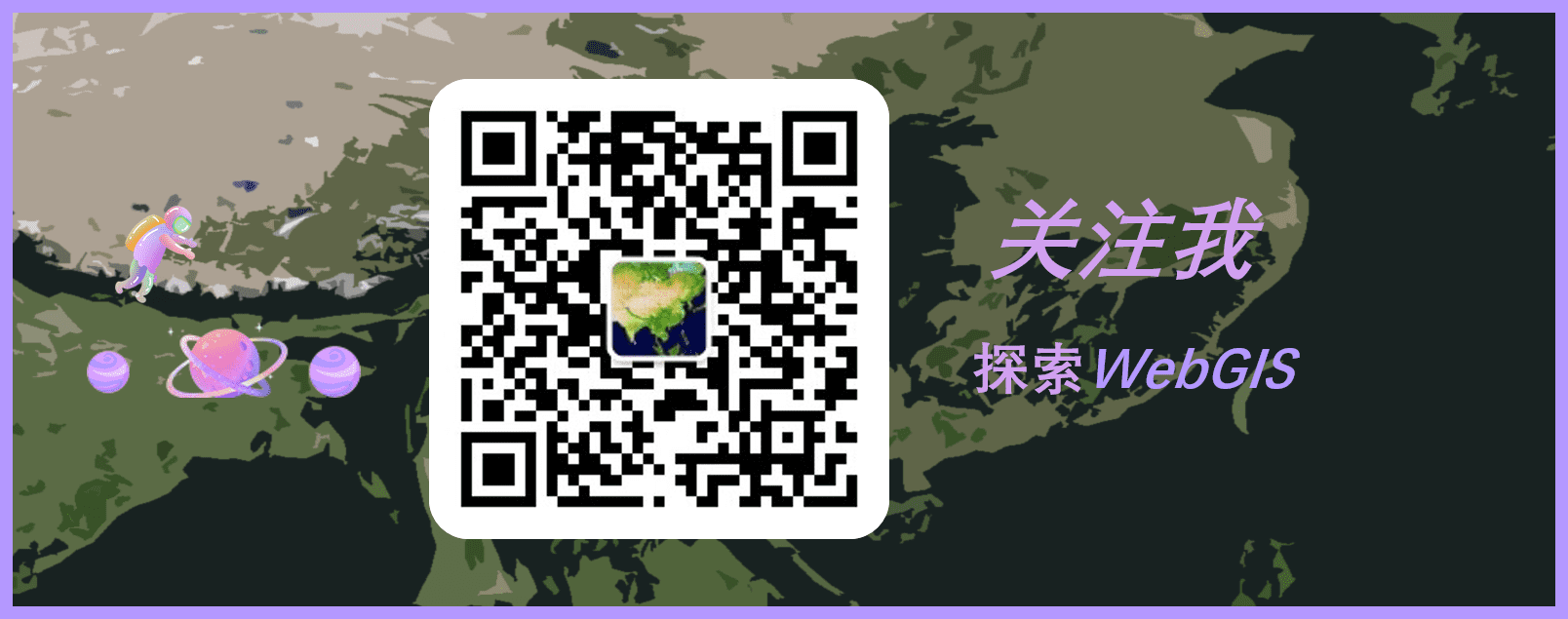^ 关注我,带你一起学GIS ^
注:当前使用的是 ol [9.2.4] 版本,天地图使用的key请到天地图官网申请,并替换为自己的key
 前言
前言
❝使用OpenLayers不仅可以绘制普通点、线、面等形状,还可以自定义绘制形状,比如可以用来绘制带箭头的线段。
1. 基本原理
绘制箭头线是在绘制普通线段的基础上进行改进,在绘制过程中需要计算下一节点与上一节点之间的方向关系,并且在下一节点的基础上添加箭头图标。在给绘制线段添加自定义样式前,可以通过样式函数来实现。
2. 创建样式函数
该样式函数具有一个参数feature,并且在最后需要返回样式对象。 因为需要为多个绘制的节点添加箭头,所以创建一个线段样式数组用来保存箭头线。
因为需要为多个绘制的节点添加箭头,所以创建一个线段样式数组用来保存箭头线。
Math.atan2(p1,p2)方法计算二维坐标系中任意一个点(x, y)和原点(0, 0)的连线与X轴正半轴的夹角大小。
此处可以使用该函数来计算下一节点与上一节点之间的方向。对于需要添加的箭头可以使用图标样式来实现,在网上下载一个右箭头图标即可。这里推荐使用阿里巴巴矢量图标库。iconfont:[https://www.iconfont.cn/](https://www.iconfont.cn/)。对于如何设置要素样式,可以参考样式大全
// 创建样式函数
const styleFunction = function (feature) {
const geometry = feature.getGeometry()
const lineStyles = [
new ol.style.Style({
stroke: new ol.style.Stroke({
color: "#1296db",
width: 5
})
})
]
geometry.forEachSegment((start, end) => {
const dx = end[0] - start[0]
const dy = end[1] - start[1]
const rotation = Math.atan2(dy, dx)
lineStyles.push(new ol.style.Style({
geometry: new ol.geom.Point(end),
image: new ol.style.Icon({
src: "../../image/arrow-right.png",
anchor: [0.85, 0.5],
rotationWithView: true,
rotation: -rotation
})
}))
})
// 记住需要返回样式数组
return lineStyles
}
3. 创建矢量图层
后面的就比较简单了,只需要创建矢量数据源,然后将其放在矢量图层中。最后创建绘制交互控件,并将其添加到地图中即可。
// 创建矢量数据源
const vectorSource = new ol.source.Vector({})
// 创建矢量图层
const vectorLayer = new ol.layer.Vector({
source: vectorSource,
style: styleFunction
})
// 添加矢量图层
map.addLayer(vectorLayer)
// 创建绘制控件
const drawInteraction = new ol.interaction.Draw({
source: vectorSource,
type: "LineString"
})
// 添加绘制控件
map.addInteraction(drawInteraction)
4. 完整代码
其中libs文件夹下的包需要更换为自己下载的本地包或者引用在线资源。
<!DOCTYPE html>
<html>
<head>
<meta http-equiv="Content-Type" content="text/html; charset=utf-8" />
<title>OpenLayers 绘制箭头线</title>
<meta charset="utf-8" />
<link rel="stylesheet" href="../../libs/css/ol9.2.4.css">
<script src="../../js/config.js"></script>
<script src="../../libs/js/ol9.2.4.js"></script>
<style>
* {
padding: 0;
margin: 0;
font-size: 14px;
font-family: '微软雅黑';
}
html,
body {
width: 100%;
height: 100%;
}
#map {
position: absolute;
top: 50px;
bottom: 0;
width: 100%;
background: #E0ECED;
}
#top-content {
position: absolute;
width: 100%;
height: 50px;
line-height: 50px;
background: linear-gradient(135deg, #ff00cc, #ffcc00, #00ffcc, #ff0066);
color: #fff;
text-align: center;
font-size: 32px;
}
#top-content span {
font-size: 32px;
}
</style>
</head>
<body>
<div id="top-content">
<span class="removeAllLayer">OpenLayers 绘制箭头线</span>
</div>
<div id="map"></div>
</body>
</html>
<script>
//地图投影坐标系
const projection = ol.proj.get('EPSG:3857');
//==============================================================================//
//============================天地图服务参数简单介绍==============================//
//================================vec:矢量图层==================================//
//================================img:影像图层==================================//
//================================cva:注记图层==================================//
//======================其中:_c表示经纬度投影,_w表示球面墨卡托投影================//
//==============================================================================//
const TDTImgLayer = new ol.layer.Tile({
title: "天地图影像图层",
source: new ol.source.XYZ({
url: "http://t0.tianditu.com/DataServer?T=img_w&x={x}&y={y}&l={z}&tk=" + TDTTOKEN,
attibutions: "天地图影像描述",
crossOrigin: "anoymous",
wrapX: false
})
})
const TDTImgCvaLayer = new ol.layer.Tile({
title: "天地图影像注记图层",
source: new ol.source.XYZ({
url: "http://t0.tianditu.com/DataServer?T=cia_w&x={x}&y={y}&l={z}&tk=" + TDTTOKEN,
attibutions: "天地图注记描述",
crossOrigin: "anoymous",
wrapX: false
})
})
const map = new ol.Map({
target: "map",
loadTilesWhileInteracting: true,
view: new ol.View({
center: [101.485106, 25.008643],
zoom: 5,
worldsWrap: false,
minZoom: 1,
maxZoom: 20,
projection: 'EPSG:4326',
}),
layers: [TDTImgLayer],
// 地图默认控件
controls: ol.control.defaults.defaults({
zoom: false,
attribution: true,
rotate: true
})
})
// 创建样式函数
const styleFunction = function (feature) {
const geometry = feature.getGeometry()
const lineStyles = [
new ol.style.Style({
stroke: new ol.style.Stroke({
color: "#1296db",
width: 5
})
})
]
geometry.forEachSegment((start, end) => {
const dx = end[0] - start[0]
const dy = end[1] - start[1]
const rotation = Math.atan2(dy, dx)
lineStyles.push(new ol.style.Style({
geometry: new ol.geom.Point(end),
image: new ol.style.Icon({
src: "../../image/arrow-right.png",
anchor: [0.85, 0.5],
rotationWithView: true,
rotation: -rotation
})
}))
})
// 记住需要返回样式数组
return lineStyles
}
// 创建矢量数据源
const vectorSource = new ol.source.Vector({})
// 创建矢量图层
const vectorLayer = new ol.layer.Vector({
source: vectorSource,
style: styleFunction
})
// 添加矢量图层
map.addLayer(vectorLayer)
// 创建绘制控件
const drawInteraction = new ol.interaction.Draw({
source: vectorSource,
type: "LineString"
})
// 添加绘制控件
map.addInteraction(drawInteraction)
</script>
如果你喜欢本文的话,可以点赞、收藏哦 !也可以关注我的微信公众号,不定时更新有关WebGIS开发相关内容。
!也可以关注我的微信公众号,不定时更新有关WebGIS开发相关内容。
❝
OpenLayers示例数据下载,请在公众号后台回复:ol数据
全国信息化工程师-GIS 应用水平考试资料,请在公众号后台回复:GIS考试
❝
GIS之路公众号已经接入了智能助手,欢迎大家前来提问。
欢迎访问我的博客网站-长谈GIS:
http://shanhaitalk.com
都看到这了,不要忘记点赞、收藏+关注 哦!
本号不定时更新有关 GIS开发 相关内容,欢迎关注 


